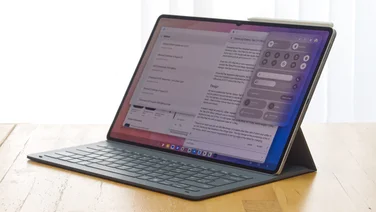To help us provide you with free impartial advice, we may earn a commission if you buy through links on our site. Learn more
- Amazon Kindle Paperwhite (2021) review: What you need to know
- Amazon Kindle Paperwhite (2021) review: Price and competition
- Amazon Kindle Paperwhite vs Signature Edition: What’s the difference?
- Amazon Kindle Paperwhite (2021) review: Design and key features
- Amazon Kindle Paperwhite (2021) review: Reading experience
- Amazon Kindle Paperwhite (2021) review: Verdict











- Bigger screen with reduced bezels
- Astonishing battery life
- Warm colours for bedtime readers
- USB-C charging at last
- Slight price increase
- Still reliant on Amazon’s store
As appropriate for the home of thousand-page novels, Amazon’s Kindles move at a slower pace than its Echo devices. Case in point, the 2021 Kindle Paperwhite is a refresh of the 2018 version, which in turn hadn’t been updated since 2015.
That slow pace of development reflects two things. First, in most people’s eyes, the book reached a point somewhere close to perfection between the 1439 invention of the printing press and the 2012 debut of the Kindle Paperwhite: it simply doesn’t need annual improvements. Second, books don’t need super-fast processors, so annual upgrades aren’t necessary.











And yet the 2021 Kindle Paperwhite provides an appealing set of improvements that makes it a highly recommended purchase. Probably not enough to upgrade from an older Kindle, but it’s hard not to endorse for a newcomer, or someone with a model that has recently ascended to silicon heaven.
READ NEXT: The best Kindles
Amazon Kindle Paperwhite (2021) review: What you need to know
In many ways, the Kindle Paperwhite hasn’t changed between generations. It’s still a compact e-ink device that stores thousands of books with a battery life that can be measured in weeks rather than hours. And, of course, it maintains the improvements from the last generation, which were chiefly IPX8 waterproofing and brilliant Audible compatibility.
But there are significant changes afoot, most obviously in the display size, which has risen from 6in to 6.8in. It’s also thinner, with dramatically reduced bezels. Night readers will be pleased to hear that it offers both warmer colour temperatures and gets brighter, with 17 LEDs compared to the five found in the 2018 model.











The new size makes that phenomenal battery life all the more outstanding, with Amazon boasting that the new Kindle lasts ten weeks – up from the six found on the previous version – and it now uses USB-C rather than microUSB for charging. The new processor, while hardly lightning fast, is also 20% quicker, for faster boot times.
Amazon Kindle Paperwhite (2021) review: Price and competition
All of this is available for £130, or £140 if you don’t want your lockscreen blighted by ads for books. That’s £10 more than the 2018 version launched for, which isn’t wholly unreasonable considering the upgrades.
You can still buy that version on Amazon for the new lower price of £99, or if you’re really on a budget there’s the basic Kindle for £70. If you want to push the boat out into slightly ridiculous luxury, the Kindle Oasis will cost you £230.











There are non-Amazon alternatives, of course, and the Paperwhite’s main rival is the Kobo Libra H2O at £150. Note that while this is a very capable ebook reader, it’s a nonstarter for those who buy their ebooks on Amazon, which only work with Kindles.
Amazon Kindle Paperwhite vs Signature Edition: What’s the difference?
There’s also the 2021 Kindle Paperwhite’s Signature Edition, which costs £180 – £40 more than the ad-free version, and £50 more than the ad-supported model.
So what does it do to justify this price bump? Well, it features three improvements of varying usefulness. Wireless charging is a welcome addition, though given the regular model needs to be charged so rarely via the ultra-common USB-C cable, it hardly feels like a necessity.
There’s also an ambient light sensor that automatically adjusts the screen brightness based on your surroundings, which is handy given the somewhat cumbersome settings menu.
Finally, it comes with 32GB of internal storage, rather than the 8GB found on the regular model. Yes, that’s clearly better, but do pause and ask yourself whether it’s necessary: it’s the difference between 3,100 books and 15,100. Do you really need to install that many books?
For me, therefore, the extra £40 isn’t really worth it. If reading is that important to you, it’s probably worth really splashing out and considering the £230 Kindle Oasis instead.
Amazon Kindle Paperwhite (2021) review: Design and key features
When I first pulled the new Kindle Paperwhite out of the box, I didn’t really see much difference. In my mind’s eye, my 2018 Kindle Paperwhite looked and felt much the same, but after charging it up and putting the two side by side, the differences are obvious.











As you can see from the picture above, it’s clearly bigger – though perhaps not as much bigger as you would imagine, since much of the increased display size comes from a reduction to the top and side bezels.
It feels much the same, though: the new model is actually slightly heavier at 205g, up from 182g on the 2018 model, but it’s evenly distributed so I can’t say I could tell the difference in the hand. It’s still made of a slightly rubbery feeling plastic, and the display still sits flush with bezel, rather than being indented as it was in the early days of the Kindle.
There’s one surprising design change on the back, though. While the full Amazon logo used to be embossed onto the rear, this has been reduced to just the arrow part, with the name of the company removed. It’s somewhat welcome, although in practical terms it barely makes a difference and the logo is pretty much invisible unless you’re actually looking for it.











In a welcome move, the new Kindle Paperwhite finally uses USB-C over micro-USB for the first time. Even the Oasis doesn’t have that little luxury, and it certainly makes charging the device less of a hassle when the battery finally needs topping up after a mammoth ten weeks of use.
Amazon Kindle Paperwhite (2021) review: Reading experience
The only fair way to test the new Kindle Paperwhite against the older model was to pick a very short book, and read half on the new Kindle, followed by the second half on the old one. I decided to re-read Jon Ronson’s Elephant in the Room: a compact little number which, were it available in paperback form, would only take up a mere 42 pages, according to Amazon.
And it’s remarkable just how much more of that text you can fit on a page with the new form factor. I adjusted both Kindles to size five font and, as you can see from the picture below, I was able to get in an extra 36 words on the new model.











If your eyesight is good, the gains are even greater. Here’s the same page with size one font and an extra 61 words.











Halfway through the book, when I changed to the old version, I certainly felt the difference. The bezels, which previously hadn’t distracted me, felt unpleasantly large, and I immediately noticed the frequency of page turns increase. Hardly the most irritating thing in the world, but the larger screen is hard to go back from once you’ve tried it. For me, the larger footprint is certainly worth it — after all, the Kindle has always been a “toss it in your bag” kind of device, rather than being pocket-friendly, so what’s an inch extra going to cost?
Even better is the improvement to speed. Granted, the Kindle will never be a speed demon, nor should it aspire to be, but pages turn instantly on the new model, while they’re subject to a very slight lag on the 2018 version, which becomes more obvious if you quickly skip a few pages in a row.











That speed boost really comes into its own when scrolling through the Amazon Kindle store for new books and when first booting up the device. I timed it. From a few hours cold, the new model switches on in 5.5 seconds, compared to the 2018 version’s nine seconds.
I can’t say I really noticed any boost to brightness offered by the additional LEDs, but the addition of colour warmth is a big plus. Switched off by default, you can turn this from barely perceptible all the way up to an unpleasantly intense orange, and the idea is the absence of blue light will make it easier for night-time readers to nod off. Whether you use it or not, it’s certainly a solid addition for those who like to read in bed.











Given the battery can be measured in weeks (ten, up from six), this wasn’t really possible to test over the course of the review, but there’s not really any reason to doubt it. The e-ink displays used on Kindles have phenomenal stamina as the battery is only called upon to refresh each static page and power the lights — hardly the most intense requirements.
This will drain quicker if you use the Audible integration, introduced last time around. It’s great: if you have both the audiobook and Kindle version of a title (with a discount for getting both, you can switch between them as you please, with the Kindle never losing your place. There are two downsides: firstly, it drains the battery faster as I mentioned, and secondly as there’s no 3.5mm headphone jack, you’ll need to connect some Bluetooth earbuds.
Amazon Kindle Paperwhite (2021) review: Verdict
Was the 2021 Kindle Paperwhite ever going to get anything less than five stars? Not likely. If there’s one thing Amazon knows how to do well (and clearly there’s plenty), it’s making a good ebook reader, and the new Paperwhite excels even by the company’s own high standards. Amazon-only library aside, the only thing you can really complain about is the £10 price increase, which isn’t unreasonable with three years’ of inflation to factor in.
Otherwise, it’s all for the better: the bigger screen is great, the reduced bezels are less distracting and the speed boost is extremely welcome. If the promised battery improvements are delivered, then that’s great too, even if that wasn’t an area that was particularly screaming out for enhancement.











But should you replace your old Paperwhite with it? Probably not. It’s telling that I didn’t really feel a difference until I used one after the other, and while I’d be unwilling to go back to the old one having got used to the new one, I don’t feel that you’re missing much if you continue to use the 2018 version until it finally gives up the ghost.
But if you need to replace a dying model, or are joining the ebook revolution for the first time, well, I can’t think of a better place to start.







